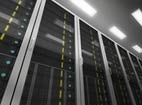Large data companies have hopped on the renewable energy bandwagon in a big way. Whether it’s Apple or Microsoft, Google or Amazon, or newer cloud providers like Box, the drive to leverage alternate energy sources like wind and solar is at a fever pitch.
Nevertheless, we need to be careful about describing exactly what is going on here, particularly when headlines start touting data facilities that are “100 percent powered by renewables.”
In nearly every case, renewable claims are based either on energy credits, in which companies buy credits from renewable producers even if they don’t actually consume any of their power, or through direct payments to nearby producers, which are then used to subsidize increased supply to the local power grid. Both are noble efforts that are critical in supporting the nascent renewable energy industry and will likely propel energy companies and independent providers to build more renewable capacity, but to then claim that so-and-so’s data center is powered by renewables is misleading nonetheless.
Microsoft, for example, is using its internal carbon fee, which it charges its own business units based on their estimated carbon emissions, to purchase energy from Illinois’ Pilot Hill Wind Project to feed its Chicago-area data centers. The deal calls for 175MW per year, which should be more than enough to meet data needs. But it still calls for Pilot Hill to feed the local energy grid, which is also supplied by non-renewable energy – most likely coal. As well, the Pilot Hill facility is about 60 miles south of Chicago, which introduces a certain amount of energy loss during transmission.
Smaller companies like Green House Data are tapping into renewables as well. But as with its new center in Cheyenne, Wyoming, the claim to 100 percent renewables is based entirely on credit purchases, which essentially offset someone else’s use of renewables, but not necessarily the Green House Data facility’s. In contrast, the company has mounted a 2MW solar array at its Newark, N.J., center that provides at least a portion of its energy needs, and this is more in line with claims that the center is running on renewable power. The same goes for Microsoft’s project in Cheyenne, which captures biofuel at a nearby waste treatment facility to power fuel cells in the data center.
Even companies that are investing directly in their own renewable supplies are not necessarily running their data facilities on that power alone. Apple is planning a third solar farm in the Claremont, N.C. region that will produce an impressive 60MW of power. By state law, however, all that power must be fed into the local grid first and then back to Apple. So it’s fair to say the local facility is drawing the lion’s share of its power from renewables, but the fact remains that a certain amount of carbon-source energy is in the mix as well.
The key question in all of this is whether the data industry’s use of credits and other techniques will be enough to spur the large energy companies to increase the use of renewables. As Forbes’ Erin Richey notes, wind-generated capacity is growing at a rapid rate – almost 20 percent in 2012 to about 467 million MWh – but commercial demand has been essentially flat at about 300,000 MWh. Without increased demand from somewhere, utilities may start to question the logic of so much oversupply.
This, of course, is the beauty behind the credit swap program since it allows organizations to support clean energy even if they can’t draw it directly from local sources. But this is not the same thing as “running the data center on 100 percent renewable power.” Once that energy hits the grid, there is no way to distinguish between what is renewable and what is not.
The motives behind many of these arrangements are pure, but the ways in which they are represented to the public are quite often inaccurate.
Arthur Cole writes about infrastructure for IT Business Edge. Cole has been covering the high-tech media and computing industries for more than 20 years, having served as editor of TV Technology, Video Technology News, Internet News and Multimedia Weekly. His contributions have appeared in Communications Today and Enterprise Networking Planet and as web content for numerous high-tech clients like TwinStrata, Carpathia and NetMagic.



